
Populist Pauline Hanson – Trump’s Australian Alter-ego?
Trump provided the world with an insight into the power of populism. Whilst many focus on the rise of populist leaders in Europe, Australia also has a firey contender.
With the resurgence of populist far-right parties emerging in force across the world, especially within Europe and the current presidency of the USA, Australia has not been one to buckle the trend with the creation of many populist parties and the resurgence of Pauline Hanson’s One Nation party. As in other 'globalising' and reform-imposing liberal democracies, the causes of ‘Hansonism’ as generic protest populism are "multiple, hard-to-avoid, and predictable"(DeAngelis, 1998). Hence, at first glance, Hanson can be seen as the generic xenophobic populist to join the many other sweeping the western world by storm in the last few decades.
However, upon further inspection, Hanson and her message hold key differences to other populist leaders giving her a surprising popularity with Australian voters of a wide demographic. Therefore, does this distinguish Pauline Hanson from the likes of Donald Trump with his wave of Vox populism? Whilst Hanson claims, like so many, to speak for the people, are her message and issues actually targeting Australia’s middle-class? These questions will be answered through analysing Pauline Hanson’s populism as a communicative frame, how Hanson’s social media presence compares to that of Donald Trump and evaluate whether Hanson can ever achieve the same political success.
The similarities between Hanson and Trump
Hanson's Populism
It can be seen that Pauline Hanson has a lot in common with the current President of America; from her infamous characterisation as the ‘right-wing joke’ of the political sphere to her ability to be a powerful communicator whose unpleasant message has the ability to resonate with so many. The main link between the two is their populist style and rhetoric. Populism is a flag that covers many different phenomena, however, it is best described and discussed in relation to Hanson and Trump as a political communication style of political actors that refers to the people (Jagers, 2007). This is not a new development; this definition comes from Canovan’s 1981 “politicians' populism”, however, the idea of populism and being the voice of the people has been documented throughout history. Populism is now understood as a way of exhibiting a closeness to ordinary citizens (Jagers, 2007).
“To survive in peace and harmony, united and strong, we must have one people, one nation, one flag.” (Hanson)
This is very clearly seen in both Trump’s and Hanson’s discourse; Trump’s “America is back. I am your voice" slogan on his personal website (Maly, 2017) and Hanson’s “speak for the voiceless and the powerless” in her principles and objectives on her One Nation website. Note that whilst both Trump and Hanson are considered right-wing in their political standpoint, this form of populism does not correspond to either side of the political line and has no political colour.
Anti-establishment
The other major characteristic of populism is its anti-establishment nature. Though this is not an exclusive feature, many scholars consider it to be a major one (Jagers, 2007). The first idea that comes to mind when elites are mentioned is that of political elites (the government, ministers in power etc); however, this can range from the media to intellectuals and economic and business powers. Populism establishes a gap between these elites and the people and capitalises on the contempt and anger that this gap exists. This gives populist leaders someone to blame for all the hardships in people’s lives.
Maly describes this as a form of Vox populism. He states that this constructed political elite and creation of Vox populism completely redefined democracy: “Democracy became characterized as politicians uttering "the voice of the people" instead of a grand narrative on human rights, equality and freedom for all” (Maly, 2017). As mentioned by Maly, this has allowed the likes of Trump and Hanson to be able to make xenophobic and racist comments which undermine human rights whilst still appearing as the most democratic voices (Maly, 2017). This can be seen in Trump’s retweets of the UK’s far-right “Britain’s first” party who are known for their racist views and Hanson’s political stunt of dressing in a burqa to show the “lack of security measures” in Australia against Muslim women wearing religious headwear.
Hanson wearing a burqa in Parliament in bold statement Trump retweeting Britain First anti-Muslim tweets
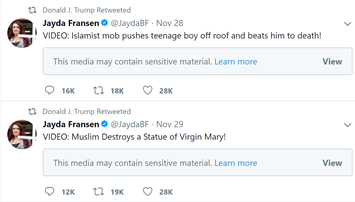
Anti-immigration
This highlights a further related similarity of Trump and Hanson; their anti-immigration policies and refusal of so-called ‘political correctness’. As clearly seen in the example given above, both leaders present anti-Islamic arguments as forerunners in their political image. Whilst anti-establishment, they have also managed to create a ‘foreign’ enemy, who can easily be blamed for unemployment, loss of identity and anti-nationalistic rules and regulations put in place by ‘liberal’ parties previously or currently in power. No longer are the country’s problems purely down to home-grown Americans and Australians; the alienation of a mistaken but often perceived international threat to the traditional way of life.
This allows both leaders the ability to pin the blame on yet another demographic; instead of the elites who look down on the average citizen from their thrones of power and money, it’s the foreign aliens who seek to steal your jobs which you have a right to and wish to convert your way of life form a pure Christian livelihood to a restrictive anti-feminist religion which seeks to destroy everything you hold dear. This kind of rhetoric and message speaks straight to the white, male, blue-collar members of society who fear these exact things through lack of knowledge and understanding of the real catalysts behind economic factors such as employment and the social benefits of multi-culturalism.
"If you don't want to embrace Australian values I say go to the airport and head back home." (Hanson, 2006)
Public voicing of discrimination against immigrants, especially Muslims, such as Hanson’s objective to “oppose Sharia Law ever being allowed in Australia” gives this targeted demographic a voice, which both benefits them as a citizen and Hanson as a populist leader.
The differences
Hanson's message
This, therefore, seems to put Trump and Hanson quite neatly into a ‘populist right-wing bubble’ in which they celebrate each other’s victories and follow each other’s traits. Indeed, Hanson even live-streamed her celebrations as the results of the American elections were announced (Messurier, 2016). However, upon further inspection of Hanson and her own brand of ‘Hansonism’, a variety of differences start to appear both at the surface and deeper levels. This can be analysed using Lempert and Silverstein’s (2012) “creatures of politics”. Lempert and Silverstein state that a politician’s message is “the politician’s publicly imaginable ‘character’ presented to an electorate, with a biography and a moral profile crafted out of issues rendered of interest in the public sphere” (Lempert & Silverstein, 2012).
Hence, Hanson’s message is one of the lower middle-class woman, one who has bucked the trend as a populist brand of modern Australian 'feminism' becoming one of the rare few women to lead a right-wing party. Indeed, it is remarkable seeing her relative success as a relatively young and uneducated woman who has created a party in her own image, without any obvious and stable male mentor (DeAngelis, 1998). This has allowed her to come across as a true “voice of the people”. She is able to successfully target Australians with a similar upbringing and background and further their sense of relatability to her and the party.
Hanson campaigning for local agriculture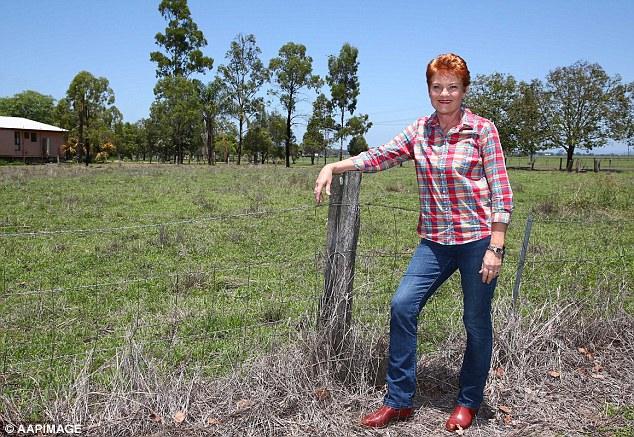
This is the opposite message of Trump. As discussed by Maly, Trump’s “positive message” is that of “the very definition of the American success story” as seen on his website (Maly, 2017). Trump is quite clear that he wants his status as an “eccentric businessman-celebrity” (Maly, 2017) to be known by his supporters, which would at first glance place him in an elite position, alienating himself from his followers. However, Trump has had completely the opposite effect, winning over the hearts and votes of the white working class (Vance, 2016).
Trump presenting himself as a successful businessman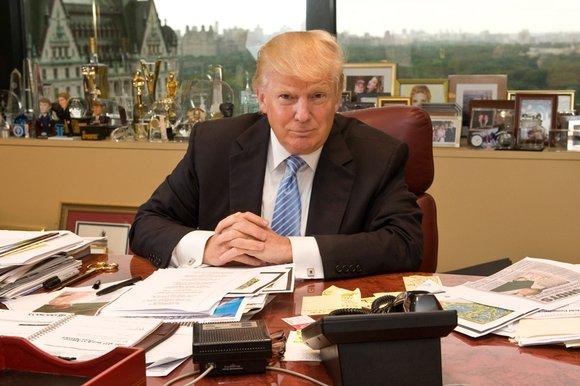
Facebook vs Twitter
Therefore, how does this separate Hanson from Trump, when the same result of seducing the working class has been seen in both countries? The difference may lay in two areas; firstly, her social media presence and secondly her apparent appeal to the Australian middle-class as a protest vote. Comparatively, Hanson has a pityful number of social media followers compared to Trump. Firstly, on Twitter, which is generally seen as the foremost site for politicians to interact with followers and promote themselves on social media, Hanson racks in just under 35,000 followers, which compared to Trump’s 44.6 million seems insignificant. Furthermore, Trump has almost complete control of his social media presence through Twitter, with personal first-hand tweets being posted daily. Trump stating that CNN produces fake news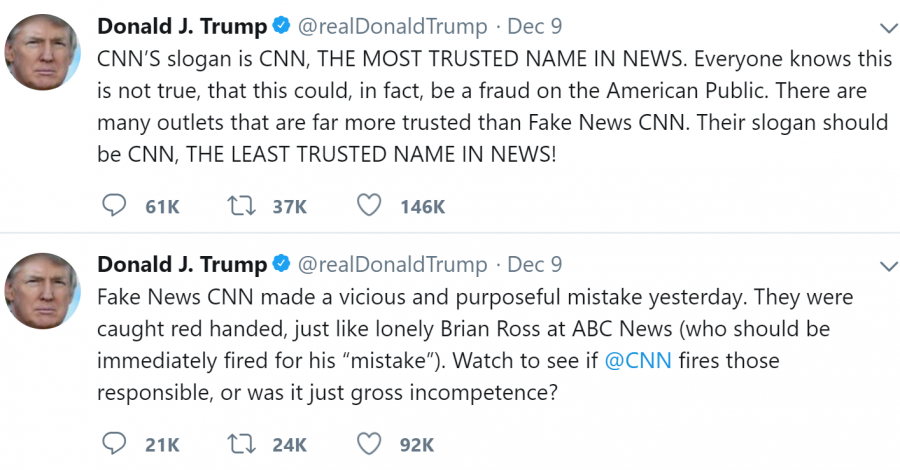
This has allowed him to connect with his working-class social media users on a deeper level with a largely positive response to his claims of ‘fake news’ and anti-immigration posts. Hanson, on the other hand, has handed over her twitter to her PR team, with the occasional personal tweet signed “-PH”. However, her Facebook page has seen greater success, with a current following of over 200,000. It is here where Hanson directly interacts with her viewership, with successful live-streams gaining a steady flow of thousands of viewers with a corresponding number of supporting comments. More importantly, Hanson uses these live-streams and Facebook posts to further her message, as discussed previously.
Hanson gained over 2000 consistent viewers during her livestream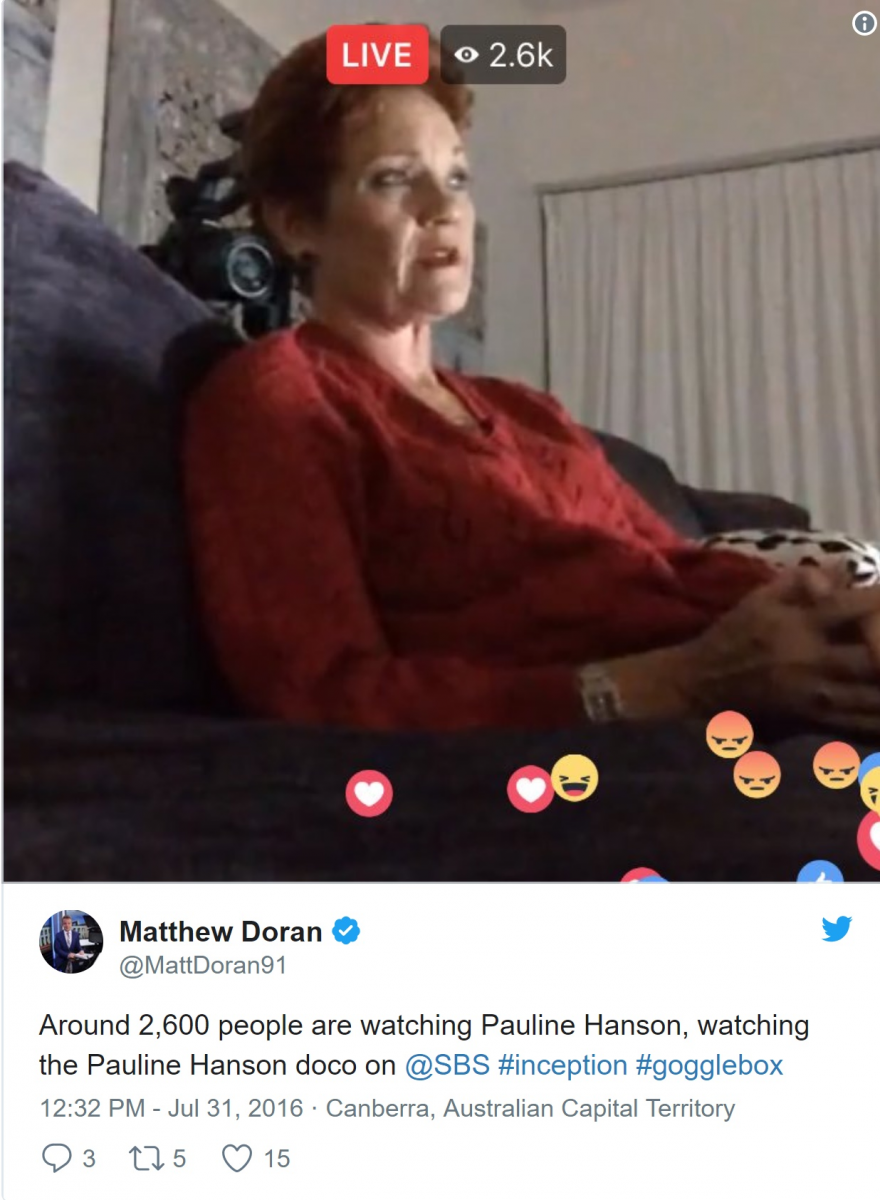
Whilst they are sandwiched in-between political posting, she uses posts such as recording herself watching a documentary about herself and supporting the Australian professional boxer Jeff Horn at the Brisbane Convention Centre (see above). This allows Hanson to connect personally with her Facebook followers as Trump has also managed to do successfully. However, it is unlikely that Hanson will ever achieve the same infamous status that Trump has acquired on the social media platform. Hanson live-streaming the boxing match between Jeff Horn and Gary Corcoran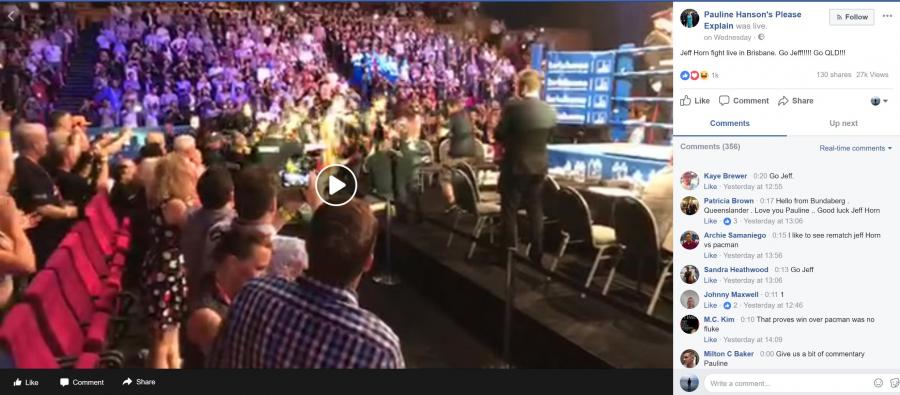
Middle-class Australia
Whilst Hanson has captured the attention of the working class, it has recently been argued that the reason for her success in the Western Australian state election on 11 March 2017 was the surprising support of Australia’s middle class. Although ‘Hansonism’ has resonated with Australia’s working class, Frank Mols, a political scientist at the University of Queensland who has studied the rise and fall of populist far-right movements, says the relatively affluent have proven time and again to be as susceptible as the economically disadvantaged to politicians’ anti-immigrant messages (Robertson, 2017). Joshua Robertson from The Guardian discovered that the stereotype of the One Nation’s voter demographic as the older, less educated man in a low-income area is misleading (Robertson, 2017). Hanson’s strand of xenophobic populism and the increasing worries of the “left urban elite” has swayed many affluent voters towards the party.
They tell lower middle-class voters, ‘They have the lifestyle and you are doing the hard work' (Robertson, 2017)
As Mols further states, “They are anxious to protect their relative affluence and upward mobility, and can easily become wary of immigrants and minorities “especially if politicians tell them they ought to be fearful of these groups” (Robertson, 2017). Indeed, Hansonism is able to reach an audience beyond the typical populist demographic and starts to become a leader who appeals to the large majority of Australian citizens, no matter their background or public status.
Hanson’s rise to power?
So, Hanson and her One Nation Party have been able to combine the main appealing qualities of Trump and his message with a few personal changes in order to make them unique. Therefore, is Hanson set on the path to becoming the next Australian Prime minister? The short answer is no. Whilst Hanson has been able to gain relative success in March 2017, this only made a small dent in the support for the Labor and Liberal parties in Australia. Indeed, the November state elections proved tough for One Nation; whilst still gaining a notable 14% its success in trying to de-stabilise the conservative party was underwhelming (Miragliotta, 2017). Furthermore, with Australia’s current voting system of single-member representation, the likelihood that One Nation will ever be able to have a meaningful presence in Australian politics is slim.
Finally, Hanson’s focus on xenophobic populism has been diluted by the rise of several other right-wing populist parties all focusing on the same issues and objectives as One Nation; it is now joined by Katter's United Party (KAP), Corey Bernardi's Australian Conservative Party (ACP) and the Jacqui Lambie Network (JLN) (Miragliotta, 2017), with the KAP winning two seats in the Queensland elections. Though Hanson still holds her infamous Pedi stool in Australian politics, it seems that her message and unique traits may not be enough to keep her afloat as a real contender and success story like Trump. Therefore, for now, Hanson will have to accept that she will be in Trump’s shadow as the populist leader who became the true “voice of the people”.
References
De Angelis, R. (1998). Pauline Hanson's One Nation Party: Xenophobic Populism Compared, Policy, Organisation and Society. 16(1), 1-27. doi:10.1080/10349952.1998.11876687
Jagers, J. (2007, April 5). Populism as political communication style: An empirical study of political parties' discourse in Belgium. European Journal of Political Research, 46(3), 319-45. doi:10.1111/j.1475-6765.2006.00690.x
Lempert, M., & Silverstein, M. (2012). Creatures of Politics: Media, Message, and the American Presidency. Bloomington: Indiana University Press. Accessed on 15/10/2017
Maly, I. (2017). Why Trump Won. Accessed on 15/10/2017
Messurier, D. L. (2016, November 9). One Nation Senator Pauline Hanson makes toasts to Donald Trump victory. Accessed on 6/12/2017
Miragliotta, N. (2017, December 1). Pauline Hanson: What the Queensland election tells us about One Nation. Accessed on 7/12/2017
One Nation Party, Pauline Hanson (2017). Principles and Objectives. Accessed on 5/12/2017
Robertson, J. (2017, March 3). Middle-class revolt: how Pauline Hanson took her message beyond the battlers. Accessed on 7/12/2017
Vance, J. (2016, September 11). How Donald Trump seduced America’s white working class. Accessed on 6/12/2017